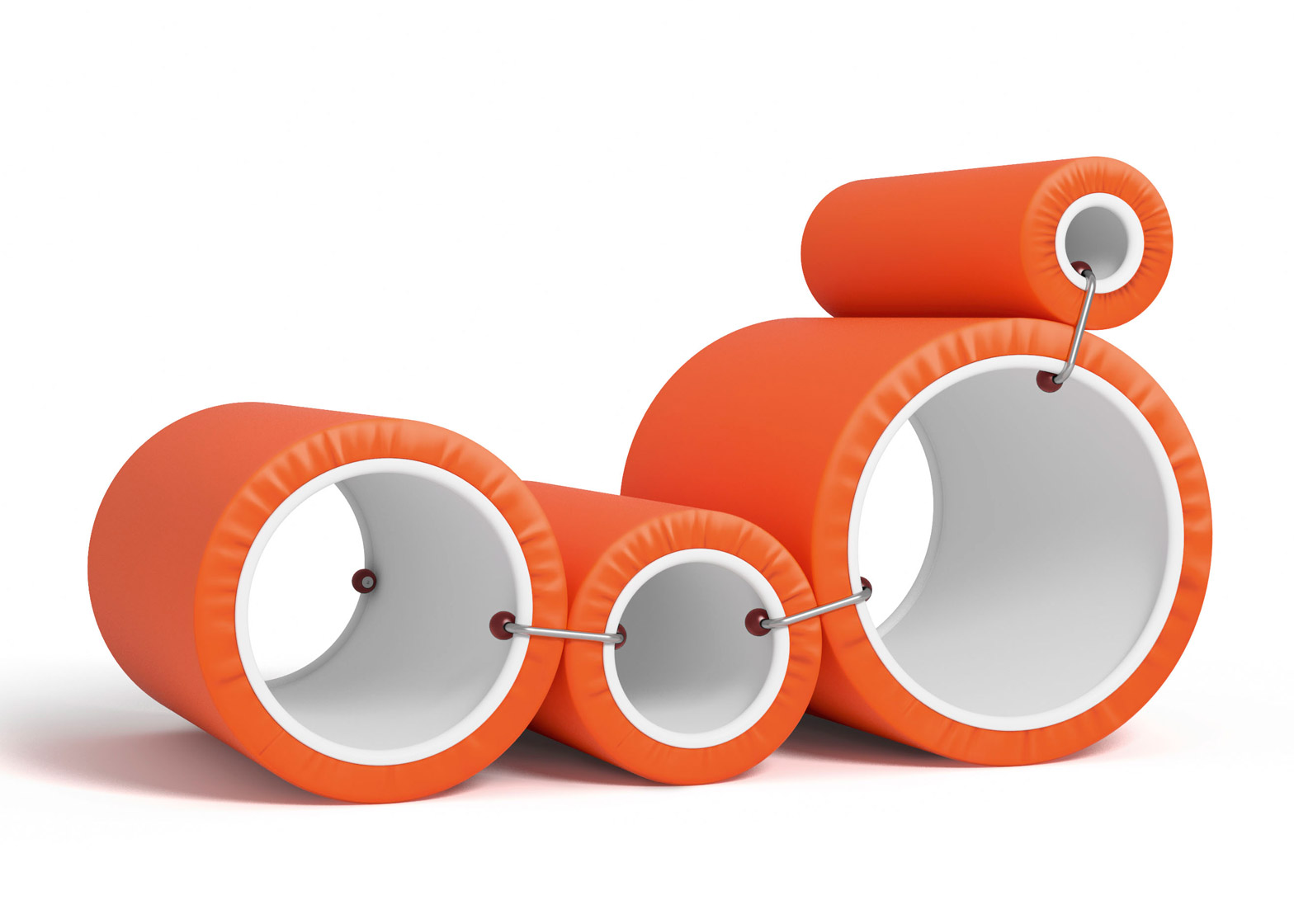Renowned industrial designer Joe Colombo's Tube Chair has been rescued from "the pages of design books" by Italian furniture brand Cappellini, which is rereleasing the piece.
Originally produced by Flexform in 1969, the chair has an ultramodern design and flexible modular construction that led Cappellini to see a place for it in contemporary interiors.
"I didn't want a piece of this importance to remain only on the pages of design books," said creative director Giulio Cappellini. "Instead I wanted it to still be purchased and used today."
"Even though it's been a long time since it's initial design, it continues to preserve its freshness and contemporaneity."
The Tube Chair, which is held in museum collections across the world, features four tubes of varied diameter. Held together with metal hooks, these tubes make up the seat, leg rest, back support and head rest.
The chair is designed to be assembled in different configurations to suit the user's needs, and the cylinders can be slotted inside one another to save space.
Born in 1930 in Milan, Colombo became one of the most influential designers of the 20th century, creating products for brands including Oluce, Kartell, Bieffe, Alessi, and Boffi before dying prematurely on his 41st birthday.
"I have always considered Tube Chair by Joe Colombo a milestone in the history of contemporary design," said Cappellini.
"It was the first modular sofa able to fit every need and still has a very contemporary pop image. It's easily adaptable to be set in the most diverse situations both public and private."
The updated chair is made using the same rotational moulding method as the original, and is available in a series of bright colours.
Earlier this year, Copenhagen-based brand Karakter celebrated Colombo's legacy by relaunching a series of furniture and lighting he designed in the 1960s. These included the designer's classic wood and leather pouf and a collection of his Domo lighting.
Recently, creative director Giulio Cappellini spoke to Dezeen about the current state of the Italian design industry, saying that brands should "move back to the origins of Italian design in the 50s and 60s".

